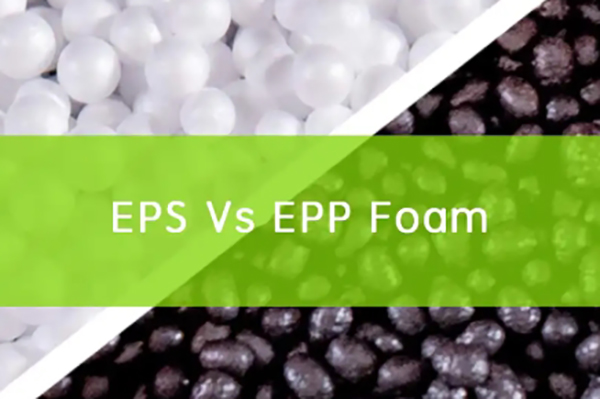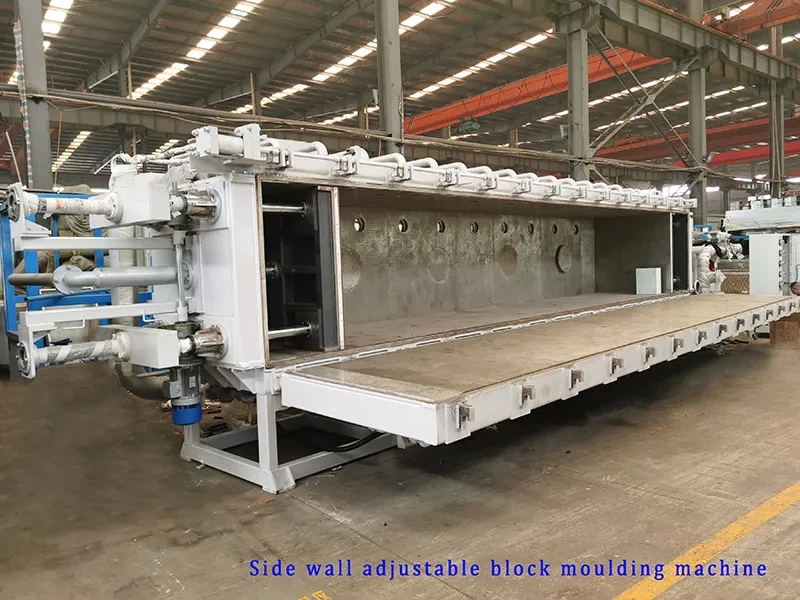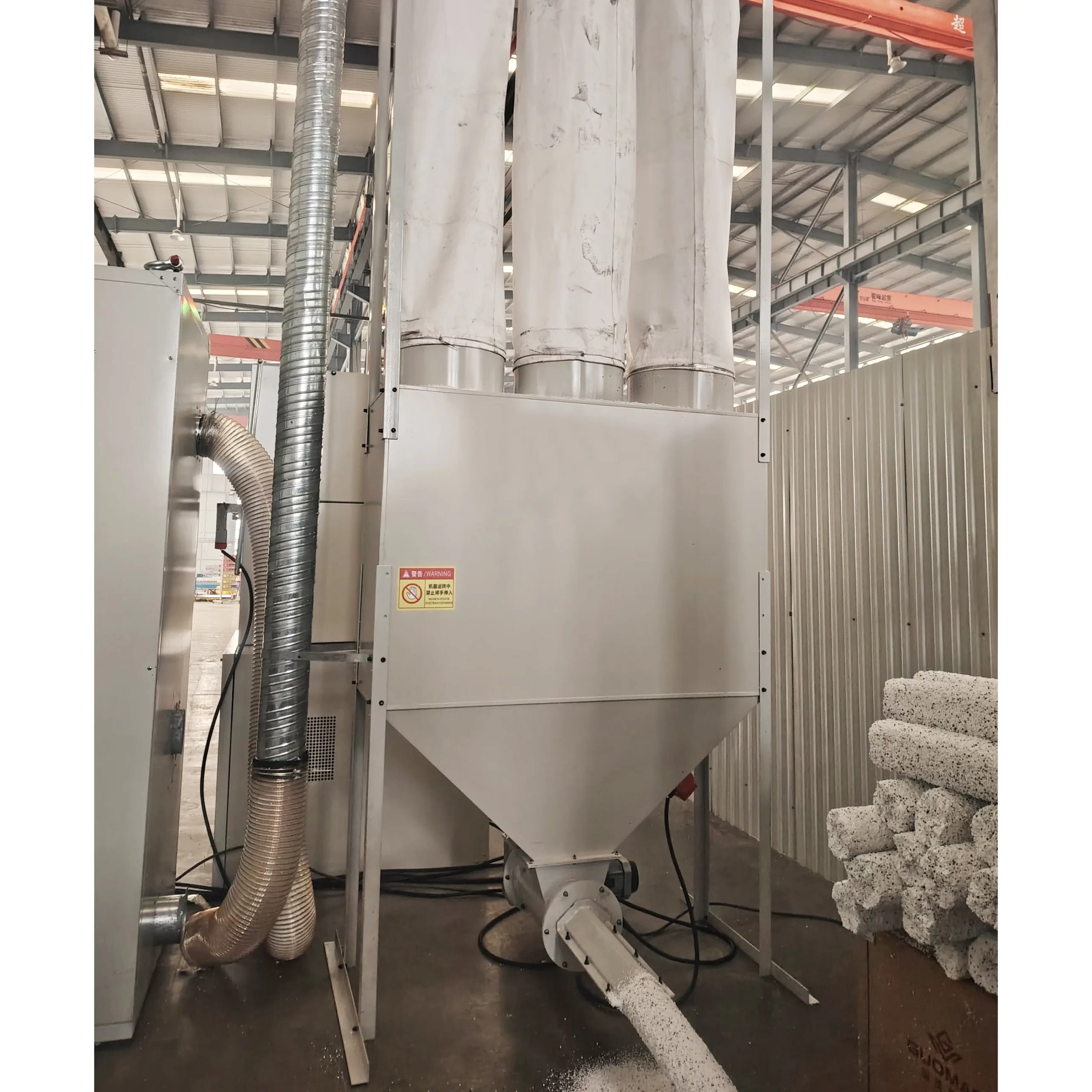Expanded Polystyrene (EPS) and Expanded Polypropylene (EPP) are two versatile foam materials widely used across various industries, particularly in packaging and insulation. While they might look similar at first glance, their underlying properties, manufacture processes, and ideal application areas differ significantly. Understanding the differences between EPS and EPP is crucial for manufacturers like you to select the right material for your product needs, optimize production efficiency, and ensure cost-effectiveness. This article delves deep into the characteristics of EPS and EPP material, explores their distinct manufacturing methods, highlights key property comparisons, and guides you in making informed decisions for your business. We’ll cover everything from the raw material origins to final product applications, helping you navigate the world of EPS and EPP foam.
What Exactly Are EPS and EPP Foam Materials?
At their core, both EPS (Expanded Polystyrene) and EPP (Expanded Polypropylene) are closed-cell foam materials derived from plastic resins. They are known for being lightweight, having excellent insulation properties, and providing cushioning. However, the base plastic type dictates their fundamental characteristics.
EPS foam, often recognized by its white color and composition of small, fused bead structures, is made from polystyrene. Polystyrene itself is a rigid, somewhat brittle thermoplastic. When expanded, it becomes a lightweight material with good insulation capabilities and decent compressive strength, making it ideal for specific applications. Think of the protective packaging for electronics or basic building insulation.
EPP foam, on the other hand, is derived from polypropylene, a more flexible and durable plastic. This inherent flexibility translates into the foam itself. EPP is known for its remarkable impact resistance, high elasticity, structural strength, and ability to return to its original shape after compression or impact. It also boasts superior chemical resistance. These properties make EPP a preferred choice for applications demanding greater durability and energy absorption.

How Do the Raw Materials for EPS and EPP Differ?
The fundamental difference between EPS and EPP begins with their respective raw material beads. While both start as small polymer resin beads, their composition and the blowing agent used during initial processing differ.
EPS raw material consists of polystyrene beads impregnated with a blowing agent, typically pentane. When heat (usually steam) is applied, the pentane vaporizes, causing the thermoplastic polystyrene to soften and the bead to expand significantly – often 40-50 times its original size. These expanded beads are then aged before being molded.
EPP raw material involves polypropylene resin beads. The process to make them expandable is more complex than for EPS. It doesn’t typically rely on a simple blowing agent like pentane being impregnated beforehand in the same way. The expansion process for EPP often involves specific conditions of temperature and pressure, sometimes using CO2 as a blowing agent in specialized reactors, to create the expanded bead. This more intricate raw material preparation contributes to the higher cost of EPP compared to EPS. The resulting EPP beads possess the inherent toughness and flexibility of polypropylene.
Understanding the EPS Foam Manufacture Process
The manufacture of EPS foam products is generally a two-stage process, familiar to many in the industry. As a machinery manufacturer, we see this process daily in the factories we equip.
- Pre-expansion: The raw material polystyrene beads containing the blowing agent are heated, usually with steam, in a machine called a pre-expander. This causes the beads to expand to a predetermined density. The density control is crucial for the final product’s properties. Our EPS Pre-expander Machine is designed for precise density control and high efficiency. After expansion, the beads need to mature in large silos to stabilize.
- Moulding: The stabilized, expanded beads are then transferred into a mold. Steam is again injected into the mold cavity. This heat softens the beads further and causes a final stage of expansion, forcing the beads to fuse together, conforming to the shape of the mold. Cooling solidifies the structure. Whether creating large blocks for insulation using a block moulding machine or intricate packaging shapes with a shape moulding machine, the principle is the same: heat fuses the beads in the desired mold geometry.
The process relies heavily on precise control of steam pressure, temperature, and cycle times, which our automated machinery provides. This method allows for the creation of complex shapes and large blocks relatively cost-effectively.

How is EPP Foam Manufactured Differently?
The manufacture of EPP foam products shares similarities with EPS (using steam and molds) but requires different processing parameters and often more robust machinery due to the nature of polypropylene. The key difference between epp and eps lies in the manufacturing parameters and material behavior within the mold.
- Pre-treatment/Expansion: As mentioned, preparing EPP beads is distinct. Once the expanded EPP beads are obtained (often supplied pre-expanded by resin companies), they are ready for moulding. Unlike EPS, EPP beads don’t typically require the same lengthy stabilization period in silos.
- Moulding: Similar to EPS, EPP beads are pneumatically conveyed into a mold. Steam is used to heat the mold and the beads. However, EPP moulding generally requires higher temperatures and pressures than EPS moulding to achieve proper fusion between the beads. Polypropylene has a higher melting point and different thermal characteristics than polystyrene. The moulding cycle involves heating, fusion, cooling, and ejection. Precise control over steam pressure and venting is critical for achieving optimal fusion and dimensional stability in EPP products. Our specialized EPP Pre-expander Machine and moulding solutions are engineered to handle these demanding conditions.
The inherent toughness of EPP also means the mold design and clamping forces on the moulding machine need to be substantial. The ability of EPP to withstand multiple impacts without significant damage stems directly from the properties of polypropylene and the strong fusion achieved during moulding.
EPS vs EPP: What Are the Key Property Differences?
Understanding the core property differences is vital for selecting the right foam material. Mark, as someone focused on quality and performance, these distinctions are critical:
| Property | EPS (Expanded Polystyrene) | EPP (Expanded Polypropylene) |
|---|---|---|
| Base Polymer | Polystyrene | Polypropylene |
| Flexibility | Rigid, relatively brittle | Flexible, high elasticity |
| Impact Resistance | Moderate, can fracture on impact | Excellent, multiple impact capability |
| Energy Absorption | Good initial absorption, but permanent deformation | Superior energy absorption, shape recovery |
| Density Range | Typically lower (10-35 kg/m³) | Wider range, often higher density (18-200+ kg/m³) |
| Compressive Strength | Good for its weight | Very good, especially at higher densities |
| Chemical Resistance | Limited (sensitive to many solvents) | Excellent (resistant to many chemicals) |
| Temperature Range | Lower service temperature | Higher service temperature |
| Durability | Moderate | High, very durable |
| Cost | Generally Lower | Generally Higher |
Essentially, EPS offers good value for static loads, insulation, and single-impact packaging where cost is a major driver. EPP, while more expensive, excels in applications demanding resilience, repeated shock absorption, higher strength-to-weight ratio, durability, and resistance to chemicals and higher temperatures. The difference between epp and eps in terms of robustness is significant.
Comparing Thermal Insulation Properties: EPS and EPP
Both EPS and EPP are effective insulation materials because their structure consists largely of trapped air within the closed cells. Air is a poor conductor of heat, giving both foams good insulating properties. However, there are nuances.
EPS is very widely used as thermal insulation in the construction industry (building insulation) and for temperature-sensitive packaging. Its thermal conductivity is generally very low (meaning it’s a good insulator), especially at low density ranges commonly used for insulation boards. It provides excellent thermal performance for its cost.
EPP also provides good thermal insulation, though its conductivity can sometimes be slightly higher than EPS at equivalent densities. However, EPP maintains its insulation performance over a wider temperature range and is much more resistant to physical damage during installation or use. Its structural integrity and moisture resistance can also be advantageous in certain insulation scenarios. Where durability and resistance to impact or compression are needed alongside insulation, EPP might be the better choice, despite potentially being slightly less efficient purely as an insulator on a cost-per-R-value basis compared to standard EPS insulation boards.
Which Industries Primarily Utilize EPS Foam?
EPS foam is incredibly versatile and cost-effective, making it a staple in several key industries:
- Packaging Industry: This is perhaps the most visible use. EPS is commonly used for protective packaging for electronics, appliances, furniture, and fragile goods due to its cushioning properties and ability to be molded into custom shapes. Its lightweight nature also reduces shipping costs.
- Construction Industry: Used extensively for thermal insulation in walls, roofs, and floors. EPS is available in large blocks or sheets (often produced using an EPS Cutting Machine), geofoam for lightweight structural fill, and in insulated concrete forms (ICFs). Its good insulating properties and relatively low cost make it attractive.
- Food Service: Insulated containers for food transport (hot or cold), disposable cups, and trays often use EPS.
- Horticulture: Seedling trays and propagation containers.
- Buoyancy: Used in flotation devices, docks, and pontoons due to its closed-cell structure and low water absorption.
The broad applicability of EPS stems from its balance of performance (insulation, cushioning) and economic efficiency.

What Are the Common Applications for EPP Foam?
EPP foam‘s unique properties – particularly its durability, flexibility, impact resistance, and shape memory – make it ideal for applications where EPS might fail or be insufficient. Key industry applications include:
- Automotive Industry: This is a major market for EPP. It’s widely used for bumper cores, side impact protection, door panels, pillars, headrests, tool kits, trunk liners, and seating components. Its ability to absorb impact energy repeatedly and its lightweight nature are critical for fuel efficiency and safety. Many automotive parts rely on EPP.
- Industrial Packaging & Dunnage: Reusable transport containers (shipping trays) for sensitive components (like electronics or automotive parts) benefit from EPP‘s durability and cushioning. It can withstand rough handling far better than EPS.
- Sports and Leisure: Used in high-impact applications like bicycle helmet liners, body protection, and components for model aircraft due to its excellent shock absorption and lightweight properties. Some high-end sports helmets utilize EPP.
- Furniture: Used as structural components or cushioning in modern, lightweight furniture designs.
- HVAC: Components requiring insulation, structural integrity, and moisture resistance.
- Consumer Goods: Various applications where resilience and cushioning are needed.
The choice of EPP is typically driven by requirements for higher performance, longevity, and the ability to handle repeated impacts or stresses, justifying its higher cost compared to EPS.
Sustainability and Recycling: EPS vs EPP Considerations
Sustainability is an increasing concern for manufacturers and consumers alike. Both EPS and EPP face challenges and opportunities in this regard.
EPS is technically recyclable. Clean EPS waste can be ground down and reincorporated into new EPS products (though often at a lower percentage), densified (via melting or compression) for easier transport to recycling facilities, or repurposed. The challenge often lies in collection logistics and contamination. Used EPS packaging, especially food containers, can be difficult to clean. However, industrial scrap from manufacture is often readily recycled. Machines like EPS compactors and melting machines facilitate this process.
EPP is also recyclable. Like EPS, industrial scrap is often recycled internally. Post-consumer EPP recycling exists, particularly within the automotive industry where collection streams are more established. EPP can be ground and re-pelletized for use in injection moulding or other plastic processing methods, or sometimes re-integrated into new EPP foam production. Its durability also means EPP products, like reusable dunnage, have a longer lifespan than single-use EPS packaging, contributing positively to sustainability through reuse. Both materials are non-toxic.
Investing in recycling equipment, like an EPS Recycling Machine EPS Crusher + De-duster+ Dust compactor, can significantly reduce waste and potentially create value from scrap material for manufacturers using EPS.
Making the Right Choice: Key Factors for Your Application
Mark, when deciding between EPS and EPP for your products, consider these factors, aligning with your concerns about performance and cost:
- Impact Resistance Needed: Does the product need to withstand single impacts (where EPS might suffice) or multiple impacts (favoring EPP‘s resilience and shock absorption)?
- Structural Requirements: Does the foam need to bear significant loads or possess high elasticity and return to shape? EPP generally offers better structural integrity and recovery. EPS has good compressive strength but is more rigid.
- Operating Temperature: Will the product be exposed to higher temperatures? EPP has a higher service temperature range.
- Chemical Exposure: Is resistance to oils, solvents, or other chemicals important? EPP offers superior chemical resistance.
- Durability & Lifespan: Is the product intended for single use (EPS often used) or long-term/reusable applications (EPP is more durable)?
- Weight Constraints: Both are lightweight, but specific density requirements might favor one over the other depending on the strength needed at that density. EPP can achieve good strength even at relatively low densities, and very high strength at higher density.
- Cost Sensitivity: EPS is significantly less expensive than EPP, both in raw material cost and often in moulding complexity. Is the higher performance of EPP justified by the application’s demands and budget?
- Complexity of Shape: Both materials can be molded into intricate shapes, though moulding parameters differ.
Carefully weighing these factors against your specific product requirements and industry standards will guide you to the optimal foam material. Sometimes, a combination or specific grades within EPS or EPP might be the answer.
Why Partnering with an Expert Machinery Manufacturer Matters?
Choosing the right foam material is only part of the equation. Achieving consistent quality, high efficiency, and reliable production depends heavily on the machinery you use. As Allen from a specialized EPS and EPP machinery factory in China, I understand the nuances Mark faces – the need for reliable equipment, competitive pricing, and responsive support, especially when sourcing internationally.
An experienced manufacturer offers:
- Expertise: Deep knowledge of both EPS and EPP processing requirements, ensuring machines are designed for optimal performance with each specific material (EPS moulding vs EPP moulding).
- Customization: Ability to tailor machines (Pre-expanders, Moulding Machines, Cutting Lines, Recycling Systems) to your specific capacity needs and automation levels.
- Reliability: Machines built with durable components and adherence to international standards (like CE marking) minimize downtime – a key pain point.
- Efficiency: Modern machinery incorporates energy-saving features and optimized cycle times, crucial for managing operational costs.
- Support: Comprehensive after-sales service, including installation guidance, training, and readily available spare parts, addressing concerns about communication and support gaps.
Working with a dedicated foam machinery specialist ensures you get equipment that not only meets your immediate production needs for EPS or EPP but also supports your long-term growth and profitability. We understand the industry and the challenges faced by manufacturers like Mark in the USA, Europe, and Australia, and we strive to bridge the gap with quality machinery and dependable service.
Key Takeaways: EPS vs EPP Foam
- Origin: EPS comes from Polystyrene (rigid), EPP from Polypropylene (flexible, durable).
- Core Strength: EPS offers excellent insulation and cushioning for single impacts at a low cost. EPP excels in durability, multiple impact resistance, shape recovery, and chemical resistance.
- Manufacturing: Both use steam and molds, but EPP manufacture requires higher temperatures/pressures and more complex raw material processing, impacting machinery needs and cost.
- Density: EPS is typically lower density; EPP offers a wider range, often including higher density options for strength.
- Applications: EPS dominates static insulation, disposable packaging, and cost-sensitive uses. EPP is preferred for automotive parts, reusable dunnage, safety gear (helmets), and applications demanding resilience.
- Cost: EPS is significantly more economical than EPP.
- Choice: Base your decision on impact requirements, durability needs, temperature/chemical exposure, budget, and the required lifespan of the application.
- Machinery: Partnering with an expert machinery manufacturer is crucial for efficient and reliable production of either EPS or EPP products.
By understanding these fundamental differences between EPS and EPP, you can make strategic material choices that enhance your product performance and optimize your manufacturing operations.
Post time: 04-07-2025





